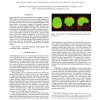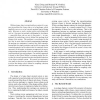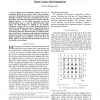954 search results - page 14 / 191 » Principles and Models for Organizing the IT Function |
COMPLEX
2009
Springer
13 years 11 months ago
2009
Springer
Abstract. The aim of a transportation system is to enable the movement of goods or persons between any two locations with the highest possible efficiency. This simple principle ins...
ISBI
2011
IEEE
12 years 11 months ago
2011
IEEE
Segmenting brain from non-brain tissue within magnetic resonance (MR) images of the human head, also known as skull-stripping, is a critical processing step in the analysis of neu...
ICSM
2009
IEEE
14 years 2 months ago
2009
IEEE
Within a large, object-oriented software system it is common to partition the classes into a set of packages, which implicitly serve as a set of coarsely-grained logical design un...
APIN
2007
13 years 7 months ago
2007
In this paper the agent-oriented modeling perspective to cope with biological complexity is discussed. Three levels of dynamics can distinguished and related to each other: dynami...
DMIN
2006
13 years 9 months ago
2006
Digital music distribution industry has seen a tremendous growth in resent years. Tasks such us automatic music genre discrimination address new and exciting research challenges. A...



